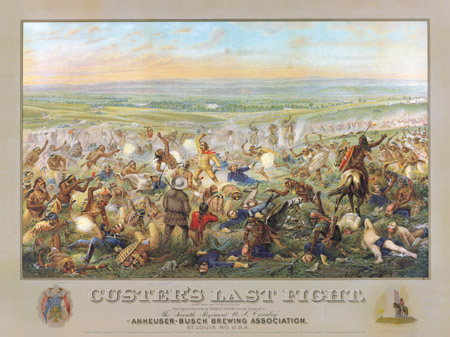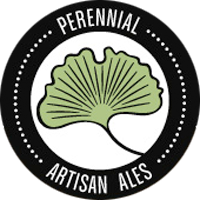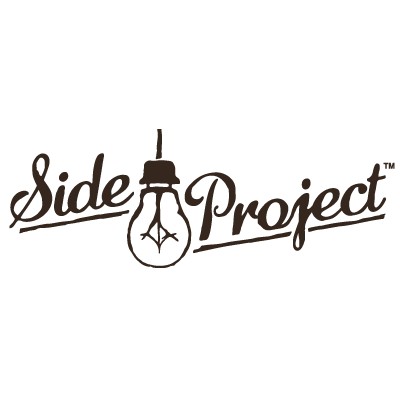
With our headquarters in Washington DC and the bulk of our correspondents found near America’s top producing craft beer regions on the coasts, it only makes sense for us to start a new series giving all the states their due, featuring breweries large and small, plus the histories behind them.
For the sake of clarity and with an eye toward avoiding any bias, we’re doing this thing alphabetically. Miraculously, we’ve reached the halfway point by tapping the 25th state on our list, The Show Me State, Missouri. While the state has no official nickname, their unofficial nickname is commonly attributed to Congressman Willard Vandiver. During an 1899 speech he declared that “I come from a state that raises corn and cotton, cockleburs and Democrats, and frothy eloquence neither convinces nor satisfies me. I’m from Missouri, and you have got to show me.”
Missouri ranks 18th in total population (roughly 6 million), is ranked 30th in population density and houses 71 craft breweries as of2015 (an increase of 28 since 2011) who are represented by the Missouri Small Brewers Guild and the St Louis Brewers Guild. The state ranks 19th in total breweries (including D.C.) and 29th in breweries per capita as of 2015, according to the Brewers Association.

History
It may surprise you that Missouri’s brewing history does not begin with our nation’s largest brewer today, but with the work of John Adam Lemp, a grocer who started Western Brewing in 1840. Considered one of the first brewers of lager in the US and the first to brew the famous Falstaff brand, Lemp’s son William soon took over the brewery and by 1870 it was the largest in St. Louis and remained so until prohibition.
The demise of the Lemp/Falstaff Empire began with the pre-mature death of William’s heir-apparent Fredrick in 1901, followed three years later by William’s suicide, a self-inflicted shot to the head. Over the next 20 years, three more in his family (Elsa, William Jr. and later Charles) would commit suicide. The brewery, once valued at $7 million, was sold at auction to a shoe company for less than $600,000 in 1922. Today, the Lemp Mansion is considered one of the most haunted residences in America.
E. Anheuser & Co., originally founded by George Schneider as the Bavarian Brewery in 1852, was purchased just prior to bankruptcy by William D’Oench and Eberhard Anheuser, the latter a successful maker of soaps. In 1861, a German born wholesaler named Adolphus Busch married Anheuser’s daughter Lilly, purchased D’Oench’s share of the company in 1869 and officially began the explosive growth of Anheuser-Busch.
As the one of the first brewers to use pasteurization (1870’s), mechanical refrigeration, refrigerated railroad cars (1876) and one of the first to bottle beer in vast numbers, Busch began to dominate the Midwest brewing industry. Following his introduction of Budweiser in 1876 (the name taken from the Bohemian Pilsner brewing town of Budweis) and a re-naming of the brewery to Anheuser-Busch Brewing Association in 1879, Busch became the president after Anheuser’s death in 1880.
Beyond Busch’s industrial ingenuity, AB became a giant through their many marketing tactics including giveaways of bottle openers, calendars, pocketknives and various printed materials. Most famous of these were the Budweiser Girl prints and serving tins in the 1880’s, and the distribution of Custer’s Last Fight lithographs to bars and restaurants in 1896.
prints and serving tins in the 1880’s, and the distribution of Custer’s Last Fight lithographs to bars and restaurants in 1896.
They were a model of success during Prohibition as they stayed in business by selling more than 25 different products including their Bevo non-alcoholic beer, soft drinks and ice cream. But once the 50’s hit, August A. Busch Jr. took their marketing to another level, utilizing the game of baseball and the new medium of television to dominate the industry, not to mention the purchase of many regional brewers to become the largest brewer in America by 1957.
In 2008, following decades of international acquisition and growth, AB was acquired by Belgian brewing behemoth InBev. Now called Anheuser-Busch InBev, with a total value of $52 billion, they became the largest brewer in the world. They’ve since acquired or gained a sizable stake in artisan breweries such as Goose Island, Craft Brew Alliance (Widmer Brothers, Redhook, Kona, Omission), Elysian, 10 Barrel, Blue Point, Golden Road, Breckenridge, Four Peaks and Devil’s Backbone.
They’re currently in the process of an “all-cash” acquisition of competitor SABMiller for $104 Billion, with SABMiller’s 58% stake in MillerCoors being spun off to Molson Coors – and likely their Tenth and Blake craft division (Blue Moon, Leinenkugel’s, Henry Weinhards, Pilsner Urquell, Saint Archer, Terrapin and Hop Valley).
The state’s first independent brewer to emerge since prohibition was Boulevard Brewing of Kansas City, MO in 1989. Winner of 15 GABF medals in 11 years (including 7 golds), Boulevard set themselves apart with their Smokestack Series of complex and daring styles. They were acquired in 2013 by Belgian brewing conglomerate Duvel Moortgat, an original investor in Brewery Ommegang who later acquired Firestone Walker in 2015.
The first new brewpub to open since prohibition was the Schlafly Taproom. Opened by The Saint Louis Brewery in 1991, they are now the largest independent craft brewer in Missouri. Known for their popular Pumpkin Ale, Schlafly produces 5 year round styles and 27 other seasonal and specialty releases. They operate the original Taproom in St. Louis and the Schlafly Bottleworks in Maplewood.
7 More Missouri Breweries We Like and You Should Check Out
4 Hands Brewing (Saint Louis) – Serving the LaSalle Park neighborhood since 2011, owner Kevin Lemp (no relation to the aforementioned Lemp family) wanted his brewery to be family focused first, hence a hand for each member of his family. In their 5 years of existence, they have created over 100 styles varying in diversity from their Single Speed blonde with jasmine, to Milk Stouts and complex barrel-aged offerings.
 Logboat Brewing (Columbia) – Named for the dugout canoes, called Missouria by the Illinois tribe (literally meaning “people of the wooden canoe”), Logboat has a strong focus on utilizing reclaimed materials, as well as educating customers about the brewing process and their philosophy. Open just over two years, they’ve already captured 3 GABF medals and feature 4 regular offerings and a diverse collection of seasonal options.
Logboat Brewing (Columbia) – Named for the dugout canoes, called Missouria by the Illinois tribe (literally meaning “people of the wooden canoe”), Logboat has a strong focus on utilizing reclaimed materials, as well as educating customers about the brewing process and their philosophy. Open just over two years, they’ve already captured 3 GABF medals and feature 4 regular offerings and a diverse collection of seasonal options.
Mother’s Brewing (Springfield) – Now in their sixth year, Mother’s has been holding court in Springfield with a creative passion for artistry. From their clever names (Lil’ Helper Midwest Coast IPA, MILF Imperial Stout, Spiffy Britches, among others) to their new Backyard Beers 16oz series, including a Cucumber Saison and Grapefruit Wheat, Mother’s is all about love for the craft, community and something for every taste.
 Perennial Artisan Ales (Saint Louis) – Another brewery that opened in 2011, Perennial has exploded in growth and influence behind their wildly successful Imperial Stouts such as Abraxas (ancho chili peppers, cacao nibs, vanilla beans and cinnamon sticks) and Sump Coffee Stout. Raking in 3 GABF Medals in four years, with over 150 styles in the book and launching the career of Side Project co-owner/head brewer Cory King, it’s clear they’re living up to their name.
Perennial Artisan Ales (Saint Louis) – Another brewery that opened in 2011, Perennial has exploded in growth and influence behind their wildly successful Imperial Stouts such as Abraxas (ancho chili peppers, cacao nibs, vanilla beans and cinnamon sticks) and Sump Coffee Stout. Raking in 3 GABF Medals in four years, with over 150 styles in the book and launching the career of Side Project co-owner/head brewer Cory King, it’s clear they’re living up to their name.
Piney River Brewing (Bucyrus) – The most rural brewery on the list, they were started on a farm in 2011 in a 70 year old barn. Working with a simple 7-barrelbrewhouse, they’ve already been awarded a GABF Gold for their Old Tom Brown Porter and a World Beer Cup Gold for their Float Trip Ale. While their distribution is limited to Central MO and Arkansas, if you’re in that neck of the woods, Piney River is THE destination for a distinctive taste of the Ozarks.
2nd Shift Brewing (New Haven/St Louis) – Originally established in 2010 as a production-only brewery, with beers available on tap at the nearby Town Hall Tap Room at Cedar Creek, 2nd Shift is almost set to move into their new digs in The Hill neighborhood of St. Louis (open August 6th). Sporting delicious creations such as their Chateau Le Douchebag (Brett Farmhouse Ale), Art of Neurosis IPA and Liquid Spiritual Delight (Imperial Stout), their twisted sense of humor is topped only by their tasty artisanship.
 Side Project Brewing (Maplewood) – Established in 2013 as a side project for Perennial Head Brewer Cory King, along with wife and co-owner Karen King. As of this year, Cory has stopped brewing for Perennial so as to build Side Project into an independent brewery focused exclusively on barrel-aged, funky beers. And they’ve done just that in Maplewood. If you can get your hands on their small batch releases, such as Abricot du Fermier, Balaton, or the Derivation or Pulling Nails series, you won’t be sorry – just look for the elegantly designed labels.
Side Project Brewing (Maplewood) – Established in 2013 as a side project for Perennial Head Brewer Cory King, along with wife and co-owner Karen King. As of this year, Cory has stopped brewing for Perennial so as to build Side Project into an independent brewery focused exclusively on barrel-aged, funky beers. And they’ve done just that in Maplewood. If you can get your hands on their small batch releases, such as Abricot du Fermier, Balaton, or the Derivation or Pulling Nails series, you won’t be sorry – just look for the elegantly designed labels.
Find more breweries in Missouri by checking out Brewtrail.
 American Craft Beer The Best Craft Beer, Breweries, Bars, Brewpubs, Beer Stores, And Restaurants Serving Serious Beer.
American Craft Beer The Best Craft Beer, Breweries, Bars, Brewpubs, Beer Stores, And Restaurants Serving Serious Beer.
